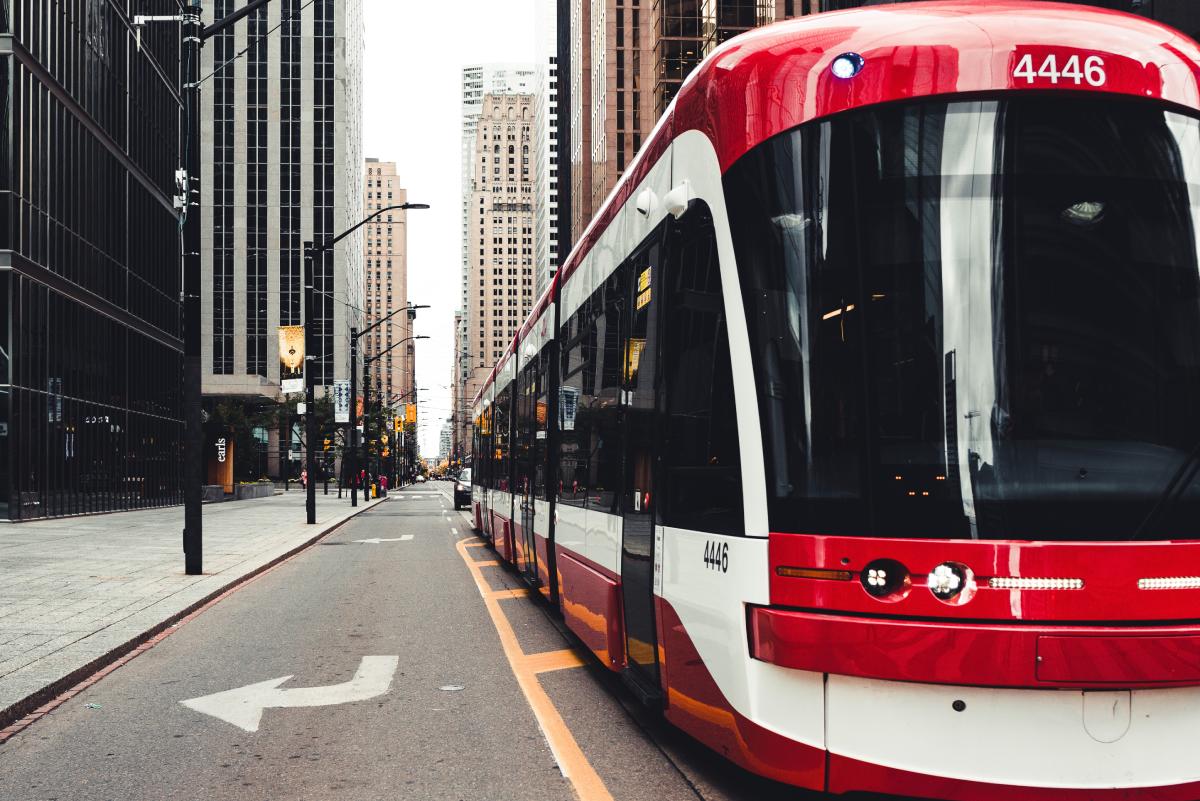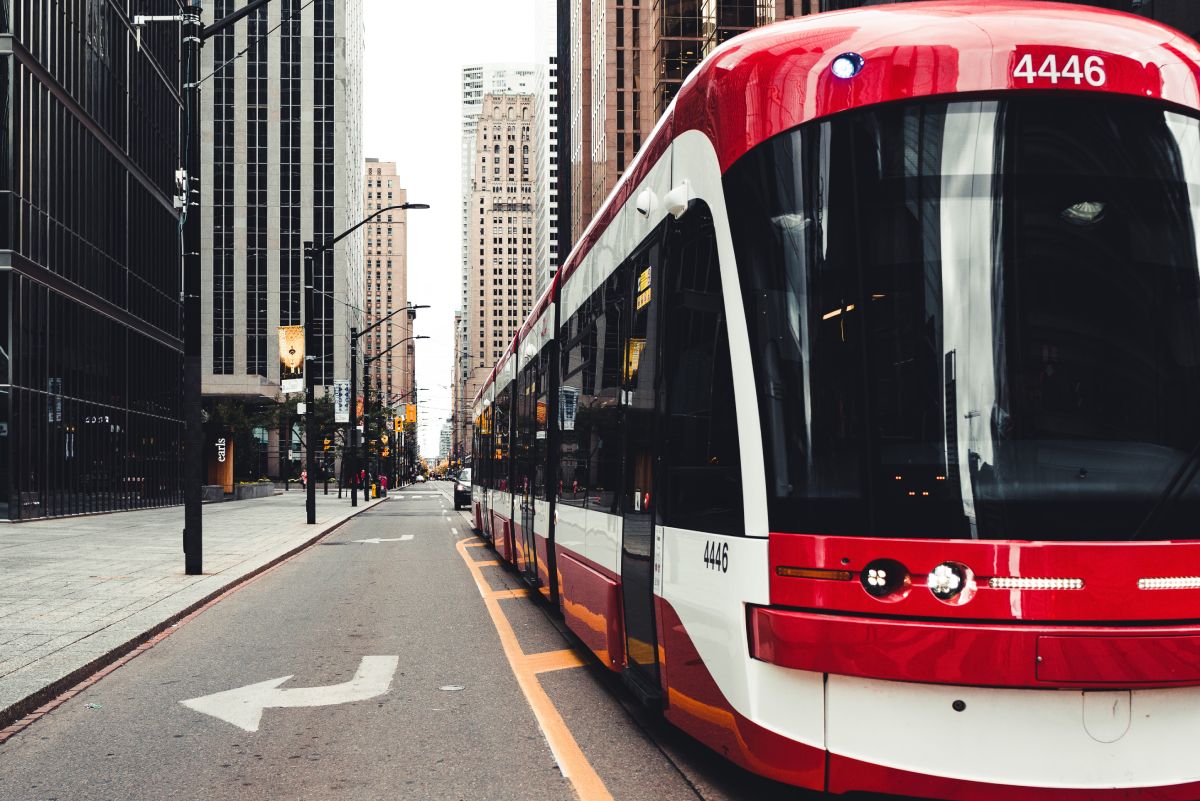Introduction
In today’s fast-paced world, the way we travel and commute has a significant impact on the environment. Sustainable transportation is a concept that aims to minimize the negative environmental effects of transportation systems while promoting efficiency, conservation, and reduced pollution. It encompasses a range of eco-friendly commuting options that prioritize environmental sustainability and personal well-being.
Sustainable transportation is all about finding innovative and responsible ways to move from one place to another without compromising the health of our planet. It involves rethinking traditional modes of transportation, such as cars and airplanes, and exploring alternative methods that have less of an impact on the environment.
Sustainable transportation focuses on reducing greenhouse gas emissions, conserving energy, and minimizing pollution. It encourages the use of public transportation, walking, cycling, carpooling, and other forms of low-carbon transportation. By embracing these sustainable alternatives, we can contribute to the preservation of our natural resources, improve air quality, and mitigate climate change.
Eco-friendly commuting options play a crucial role in addressing the environmental challenges we face today. The transportation sector is a significant contributor to greenhouse gas emissions, air pollution, and resource depletion. By adopting eco-friendly commuting habits, we can make a positive impact and create a more sustainable future.
Choosing sustainable transportation options has numerous benefits. It helps reduce air pollution, which is harmful to both human health and the environment. By reducing the number of vehicles on the road and promoting cleaner modes of transportation, we can improve air quality and decrease the incidence of respiratory diseases.
Eco-friendly commuting options also contribute to energy conservation. Public transportation, for example, allows multiple passengers to travel in a single vehicle, reducing overall fuel consumption. Similarly, walking and cycling are energy-efficient and require no fossil fuel consumption.
Moreover, eco-friendly commuting options promote physical activity and personal well-being. Walking or cycling to work not only reduces carbon emissions but also improves cardiovascular health and reduces stress levels. It provides an opportunity to incorporate exercise into our daily routines and enjoy the benefits of an active lifestyle.
In conclusion, sustainable transportation and eco-friendly commuting options are vital components of a greener and more sustainable future. By adopting these practices, we can significantly reduce our carbon footprint, improve air quality, conserve energy, and enhance our overall well-being. Through collective action and individual choices, we can create a transportation system that is not only efficient and convenient but also environmentally responsible. So let’s explore the various eco-friendly commuting options available to us and embark on a journey towards a more sustainable and livable planet.
Cycling as a Sustainable Commuting Option
Cycling is not only a fun and efficient way to get around, but it is also a sustainable commuting option that offers numerous benefits for both individuals and the environment. By choosing to cycle as your mode of transportation, you can contribute to reducing carbon emissions, improving personal health, and enjoying the freedom of two wheels.

Benefits of cycling for both individuals and the environment
Cycling brings a multitude of benefits, both for individuals and the environment. Let’s explore some of the key advantages:
-
Environmental Sustainability: Cycling is a zero-emission mode of transportation, which means it produces no greenhouse gas emissions or air pollutants. By opting for a bike instead of a car, you can significantly reduce your carbon footprint and help combat climate change.
-
Improved Physical Health: Regular cycling provides an excellent opportunity to incorporate exercise into your daily routine. It helps improve cardiovascular fitness, strengthen muscles, and enhance overall physical health. Cycling is a low-impact activity that is gentle on the joints and suitable for people of all fitness levels.
-
Cost Savings: Cycling is a cost-effective commuting option. Once you have a bike, the ongoing expenses are minimal compared to the costs of owning and maintaining a car, such as fuel, parking, and insurance. By cycling, you can save money and allocate your resources to other important areas of your life.
-
Reduced Congestion: Cycling can help alleviate traffic congestion in urban areas. With more people opting for bikes, there are fewer cars on the road, resulting in smoother traffic flow and reduced travel times. Cycling can be a faster and more efficient mode of transportation, particularly for short to medium distances.
Tips for incorporating cycling into your daily commute
If you’re considering cycling as your daily commuting option, here are some tips to help you get started:
-
Plan Your Route: Identify the safest and most bike-friendly route to your destination. Look for dedicated bike lanes, quiet residential streets, or off-road paths that can enhance your cycling experience.
-
Invest in a Reliable Bike: Choose a bike that suits your commuting needs and fits you properly. Consider factors such as comfort, durability, and versatility. Regular maintenance is essential to ensure your bike is in good working condition.
-
Practice Bike Safety: Familiarize yourself with the rules of the road and follow all traffic laws. Use hand signals to indicate your intentions, wear reflective clothing, and equip your bike with lights for visibility, especially during low-light conditions.
-
Consider Bike Accessories: Invest in accessories that enhance your cycling experience and ensure your safety. These may include a helmet, lock, panniers or a backpack for carrying items, and fenders to protect you from splashes on wet roads.
-
Start Gradually: If you’re new to cycling, start with shorter distances and gradually increase the length of your rides. This will allow your body to adapt and build stamina over time.
Safety considerations and essential gear for cyclists
When cycling, safety should be a top priority. Here are some essential safety considerations and gear to keep in mind:
-
Helmet: Wearing a properly fitted helmet is essential to protect your head in case of a fall or collision. Choose a helmet that meets safety standards and replace it if it has been involved in a crash or is damaged.
-
Visibility: Wear bright and reflective clothing to increase your visibility to other road users. Use front and rear lights, especially when cycling at dawn, dusk, or in low-light conditions.
-
Protective Gear: Consider wearing knee and elbow pads, as well as gloves, to protect your joints and provide extra cushioning in case of a fall.
-
Bike Maintenance: Regularly inspect your bike to ensure it is in good working condition. Check the brakes, tires, and lights before each ride. Keep your chain lubricated and make any necessary adjustments or repairs promptly.
Remember, cycling can be a safe and enjoyable commuting option when practiced responsibly. By embracing cycling as a sustainable mode of transportation, you can positively impact both your personal well-being and the environment. So, hop on your bike, pedal your way to work, and experience the many benefits of cycling while reducing your carbon footprint.
Public Transit: A Greener Way to Commute
Public transit systems offer a sustainable and eco-friendly alternative for daily commuting. By utilizing public transportation, you can enjoy numerous advantages while reducing your carbon footprint and contributing to a greener future.

Advantages of using public transportation
Choosing public transit as your mode of commuting brings several benefits, both for individuals and the environment. Let’s explore some of the key advantages:
-
Reduced Carbon Emissions: Public transportation produces fewer greenhouse gas emissions per passenger compared to individual cars. By opting for buses, trains, trams, or subways, you can significantly contribute to reducing air pollution and combatting climate change.
-
Cost Savings: Utilizing public transit can save you money in various ways. You don’t have to worry about fuel costs, parking fees, or vehicle maintenance expenses. Public transportation passes or tickets are often more affordable compared to the costs associated with owning and operating a personal vehicle.
-
Time Efficiency: Public transit systems are designed to efficiently transport a large number of people. They often have dedicated lanes or routes that allow for faster travel times, especially during peak hours when car traffic is congested. You can utilize your commuting time for reading, catching up on work, or simply relaxing, instead of being stuck in traffic.
-
Reduced Traffic Congestion: By choosing public transportation, you contribute to reducing the number of cars on the road. This leads to decreased traffic congestion, smoother traffic flow, and shorter travel times for everyone, including motorists.
How to navigate public transit systems effectively
To make the most of public transit and ensure a seamless commuting experience, consider the following tips:
-
Plan Your Route: Familiarize yourself with the public transit routes available in your area. Use online journey planners, mobile apps, or transit maps to map out the most efficient route to your destination. Identify the nearest bus stops, train stations, or subway entrances to your origin and destination points.
-
Timetable and Schedule: Check the schedules and timetables for the public transit services you plan to use. Be aware of the departure and arrival times, frequency of service, and any potential delays or disruptions.
-
Payment Options: Determine the payment methods accepted by the public transit system, such as prepaid cards, tickets, or contactless payments. Consider purchasing daily, weekly, or monthly passes if you use public transportation regularly to save money.
-
Transfers and Connections: Understand the transfer points and connections between different modes of public transportation. This may involve switching between buses, trains, or subway lines. Plan your journey accordingly to ensure smooth transitions and minimal waiting times.
Promoting the use of public transit in your community
Encouraging the use of public transit in your community can have a significant positive impact on the environment and the overall quality of life. Here are some ways to promote the use of public transportation:
-
Raise Awareness: Educate your community about the benefits of public transit in terms of sustainability, cost savings, and convenience. Share information through local newsletters, social media platforms, or community events.
-
Advocate for Improvements: Engage with local authorities and transportation agencies to advocate for improved public transit infrastructure, increased frequency of service, and better accessibility for all community members, including individuals with disabilities.
-
Lead by Example: Use public transportation regularly and be a role model for others in your community. Share your positive experiences, such as stress-free commuting, reduced expenses, and the opportunity to interact with fellow commuters.
-
Organize Community Initiatives: Collaborate with local organizations or community groups to organize public transit awareness campaigns, car-free days, or initiatives that promote the use of public transportation.
Encourage participation and highlight the collective benefits of reducing car dependency.
By embracing public transit as a greener way to commute and actively promoting its use in your community, you contribute to a more sustainable and environmentally friendly transportation system.
Remember, every ride on public transit makes a difference, so hop on board, join the movement, and enjoy the many advantages of this eco-friendly commuting option.
Carpooling and Ride-Sharing
Carpooling and ride-sharing present effective ways to reduce emissions and promote sustainable transportation. By sharing rides with others, you can make a positive impact on the environment while enjoying several benefits and cost savings.

Benefits of carpooling and ride-sharing for reducing emissions
-
Reduced Carbon Footprint: Carpooling and ride-sharing significantly decrease the number of vehicles on the road, resulting in lower emissions. By sharing a ride, multiple passengers can travel together, reducing the overall carbon footprint associated with individual car trips.
-
Congestion Relief: Carpooling helps alleviate traffic congestion, leading to smoother traffic flow and reduced travel times. Fewer cars on the road also mean less idling and traffic jams, resulting in a more efficient transportation system.
-
Cost Savings: Sharing the cost of fuel and tolls among multiple passengers can lead to significant savings for everyone involved. Carpoolers can also save on parking fees and maintenance costs by reducing the wear and tear on their vehicles.
Finding carpooling partners or joining ride-sharing platforms
To engage in carpooling and ride-sharing, consider the following options:
-
Connect with Colleagues and Neighbors: Start by reaching out to colleagues or neighbors who live nearby and have similar commuting routes. Discuss the possibility of carpooling and coordinate schedules that align with everyone’s needs.
-
Online Carpooling Platforms: Utilize online platforms and mobile applications dedicated to carpooling and ride-sharing. These platforms connect drivers with potential passengers based on their locations and commuting preferences. Some popular examples include BlaBlaCar, Waze Carpool, and Ridejoy.
-
Employer Programs: Inquire about carpooling programs offered by your employer. Many companies have initiatives that facilitate carpooling among employees, providing designated parking spaces, preferential carpool lanes, or financial incentives.
-
Community Bulletin Boards: Check community bulletin boards, local newspapers, or online forums where individuals post carpooling requests or opportunities. These resources can help you find potential carpooling partners within your community.
Tips for a successful carpooling experience
To ensure a smooth and enjoyable carpooling experience, consider the following tips:
-
Establish Clear Communication: Set clear expectations regarding pick-up and drop-off times, meeting points, and any necessary detours. Maintain open lines of communication with your carpooling partners to ensure everyone is informed and on the same page.
-
Be Punctual: Respect your carpooling partners’ time by being punctual. Arrive at the designated pick-up location on time, allowing for a smooth departure without unnecessary delays.
-
Share Responsibilities: Determine how costs, such as fuel expenses and tolls, will be shared among the carpooling group. Rotate the responsibility of driving to distribute the load evenly and ensure fairness.
-
Be Considerate: Respect the comfort and preferences of your carpooling companions. Keep the car clean, avoid strong fragrances, and be mindful of personal boundaries. Additionally, follow any established guidelines or rules set by your carpooling group.
-
Flexibility and Adaptability: Remain flexible and adaptable to changes in schedules or unforeseen circumstances. Life happens, and occasional adjustments may be necessary. Maintain open communication and be willing to accommodate changes when needed.
By embracing carpooling and ride-sharing, you contribute to a more sustainable transportation system while enjoying the benefits of reduced emissions, cost savings, and a more social and enjoyable commute. Join the movement and make a positive impact through shared rides!
Alternative Commuting Methods: Beyond the Conventional
In addition to cycling, public transit, and carpooling, there are several alternative commuting methods that offer sustainable and eco-friendly options. These methods not only reduce environmental impact but also promote personal well-being and embrace future transportation advancements.

Walking as a sustainable and healthy option
Walking is one of the simplest and most sustainable commuting methods available. It offers numerous benefits for both individuals and the environment:
-
Zero Emissions: Walking produces no carbon emissions, making it a truly eco-friendly mode of transportation. By choosing to walk instead of driving short distances, you can significantly reduce your carbon footprint.
-
Improved Health and Fitness: Walking is an excellent form of exercise that promotes cardiovascular health, strengthens muscles, and helps maintain a healthy weight. By incorporating walking into your daily commute, you can enhance your overall well-being.
-
Cost Savings: Walking requires no transportation expenses or fuel costs. It is a free mode of transportation that can save you money on gas, parking fees, and public transit fares.
Exploring electric vehicles and their environmental advantages
Electric vehicles (EVs) are gaining popularity as a sustainable commuting option. Here’s why they are considered an environmentally friendly choice:
-
Zero Tailpipe Emissions: Electric vehicles produce zero tailpipe emissions since they run on electricity instead of fossil fuels. By driving an EV, you contribute to cleaner air and reduced greenhouse gas emissions.
-
Renewable Energy Compatibility: EVs can be charged using electricity generated from renewable energy sources such as solar or wind power. This means that by driving an EV, you can further reduce your carbon footprint by relying on clean and renewable energy.
-
Energy Efficiency: Electric motors are more energy-efficient than internal combustion engines, converting a higher percentage of energy into forward motion. This efficiency translates to less energy waste and reduced reliance on non-renewable resources.
The potential of future transportation technologies
Advancements in transportation technologies hold the promise of even greener and more sustainable commuting options. Some potential developments to look out for include:
-
Autonomous Vehicles: Self-driving cars have the potential to optimize traffic flow, reduce congestion, and enhance fuel efficiency. By utilizing advanced algorithms and sensors, autonomous vehicles can choose optimal routes and operate at consistent speeds, leading to smoother traffic patterns.
-
Hyperloop and High-Speed Rail: Hyperloop and high-speed rail systems offer the potential for rapid and energy-efficient transportation. These technologies aim to reduce travel times, lower emissions, and provide sustainable alternatives for long-distance commuting.
-
Alternative Fuels: Ongoing research and development focus on alternative fuels such as hydrogen, biofuels, and synthetic fuels. These fuels aim to provide low-carbon or carbon-neutral options for conventional vehicles, reducing their environmental impact.
As we explore alternative commuting methods like walking, embrace electric vehicles, and anticipate future transportation technologies, we contribute to a more sustainable and eco-friendly future. By incorporating these options into our daily commutes, we can reduce our carbon footprint and create a greener transportation landscape for generations to come.
Overcoming Challenges and Encouraging Sustainable Commuting
While eco-friendly commuting options offer numerous benefits, there are often challenges that individuals face when trying to adopt sustainable transportation practices. Overcoming these challenges requires a combination of personal efforts, government support, and community initiatives to create a culture of sustainable commuting. Let’s explore how we can address these obstacles and encourage eco-friendly transportation choices.

Addressing common obstacles to adopting eco-friendly commuting habits
-
Infrastructure and Accessibility: In many areas, the lack of proper infrastructure for cycling or walking can discourage individuals from choosing these modes of transportation. To overcome this, communities can invest in the development of bike lanes, pedestrian-friendly pathways, and bike-sharing programs. Individuals can also advocate for better infrastructure in their neighborhoods.
-
Distance and Time Constraints: Long commuting distances and limited time can make it challenging to incorporate sustainable commuting methods into daily routines. Consider options like combining public transit with cycling or walking for shorter distances, or exploring flexible work arrangements such as remote work or compressed workweeks.
-
Safety Concerns: Safety is a significant concern for cyclists and pedestrians sharing the road with motorized vehicles. Encouraging the implementation of traffic-calming measures, improving street lighting, and raising awareness about road safety among all road users can help address these concerns.
Government and community initiatives to promote sustainable transportation
-
Investment in Public Transit: Governments can allocate resources to improve public transit systems, making them more accessible, efficient, and affordable. This includes expanding public transit networks, increasing frequency of service, and providing incentives for using public transit.
-
Incentives and Subsidies: Governments can offer financial incentives and subsidies for purchasing electric vehicles, installing EV charging stations, or using public transit. These measures can help offset the initial costs and encourage the adoption of sustainable commuting options.
-
Promoting Active Transportation: Local communities can organize events such as bike-to-work days, walking challenges, or public transit awareness campaigns. These initiatives raise awareness about sustainable commuting options and encourage individuals to give them a try.
Engaging in advocacy and spreading awareness about eco-friendly commuting
-
Educational Campaigns: Organizations and individuals can engage in educational campaigns to raise awareness about the environmental, health, and economic benefits of sustainable commuting. This includes sharing success stories, providing practical tips, and highlighting the positive impact of eco-friendly transportation choices.
-
Collaboration with Employers: Employees can advocate for sustainable commuting options in their workplaces, such as implementing bike-friendly facilities, providing incentives for using public transit, or offering telecommuting options. Collaboration with employers can create a supportive environment for sustainable commuting practices.
-
Active Community Participation: Engaging in local transportation planning processes, attending public meetings, and supporting sustainable transportation advocacy groups can help shape policies and initiatives that promote eco-friendly commuting on a broader scale.
By addressing common obstacles, supporting government and community initiatives, and actively spreading awareness about eco-friendly commuting, we can collectively make a positive impact on our environment, improve our health, and create more sustainable transportation systems. Together, we can build a future where sustainable commuting options are accessible, convenient, and widely embraced.
Conclusion: Embracing Sustainable Commuting for a Better Future
In conclusion, sustainable transportation offers numerous benefits for both individuals and the environment. By choosing eco-friendly commuting options, we can make a positive impact on our planet while improving our own well-being. Throughout this journey, we have explored various methods of sustainable commuting and learned about their advantages. Now, let’s recap the key benefits, encourage readers to make eco-friendly choices, and emphasize the collective impact of individual decisions on the environment.

-
Environmental Impact: Eco-friendly commuting options such as cycling, walking, and public transit significantly reduce greenhouse gas emissions, air pollution, and traffic congestion. By embracing these alternatives, we contribute to cleaner air, reduced carbon footprint, and a healthier planet.
-
Health and Well-being: Sustainable transportation promotes physical activity, leading to improved cardiovascular health, increased fitness levels, and reduced stress. It also offers opportunities to connect with the surrounding environment and enhance mental well-being.
-
Financial Savings: Choosing sustainable commuting methods can lead to significant cost savings by reducing fuel expenses, parking fees, and vehicle maintenance costs. Public transit options are often more affordable than private vehicle ownership.
It’s time to take action and embrace eco-friendly commuting options. By making a conscious choice to incorporate sustainable transportation into our daily lives, we can make a meaningful difference. Consider the following steps:
-
Evaluate Your Commute: Assess your commuting needs and explore alternatives that align with your lifestyle and circumstances. Whether it’s cycling, walking, using public transit, carpooling, or a combination of methods, find what works best for you.
-
Plan and Prepare: Plan your routes, schedule your commute in advance, and make necessary arrangements. This might include researching public transit schedules, identifying safe cycling or walking paths, or coordinating carpooling arrangements.
-
Start Small and Progress: If sustainable commuting is new to you, start with small changes and gradually increase your commitment. Begin by choosing eco-friendly options a few days a week and gradually expand until it becomes a regular habit.
It’s important to recognize that our individual choices have a collective impact on the environment. Every time we opt for sustainable transportation, we contribute to a larger movement towards a greener future. Our actions inspire others and create a ripple effect, encouraging more people to join in sustainable commuting practices.
By choosing eco-friendly commuting options, we can collectively:
- Reduce greenhouse gas emissions and combat climate change.
- Improve air quality and create healthier communities.
- Alleviate traffic congestion and enhance the efficiency of transportation systems.
- Foster a culture of sustainability and promote a greener way of living.
Remember, even small changes can have a significant impact when multiplied across individuals and communities. So, let’s take the first step and choose sustainable transportation. Let’s cycle, walk, use public transit, carpool, and advocate for greener commuting options. By doing so, we not only enhance our own lives but also contribute to a healthier planet for generations to come.




